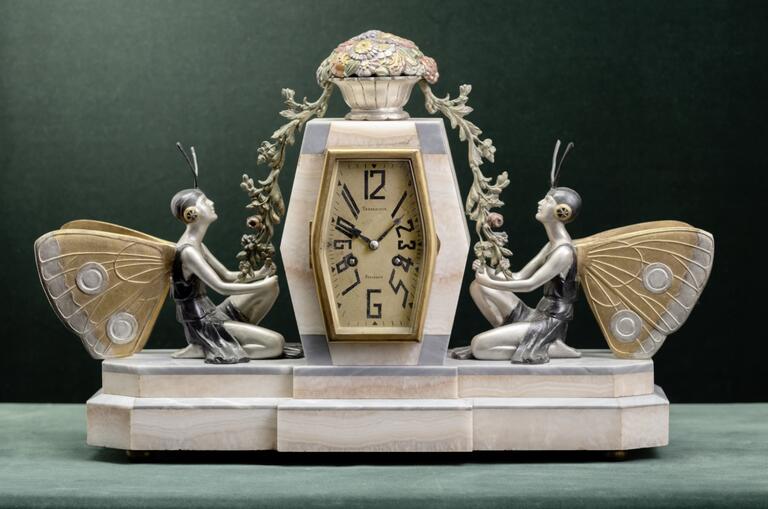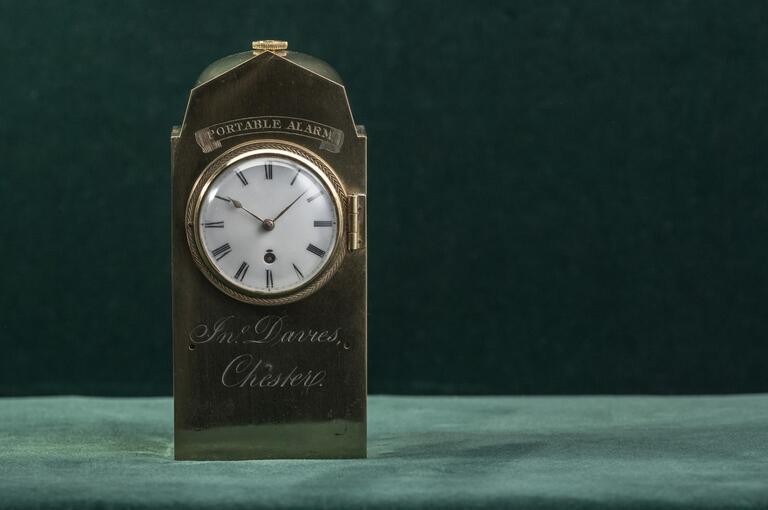Swiss Travel Clock, circa 1810
This travel clock features a round movement between four pillars. The movement is regulated by a Swiss anchor escapement with a balance wheel and spiral spring, powered by a spring-driven fusee system. The striking mechanism works in tandem with the quarter striking mechanism and can be set to petit sonnerie or grande sonnerie using a lever at the bottom of the clock. It chimes hours and quarters on two bells and has a runtime of eight days (with springs dated February 4, 1815). The alarm mechanism is tensioned via a cord. The clock's case is made of cast brass plates that are fire-gilded. It stands on four ball-shaped feet and features four decorative finials and a carrying handle on top. The front has a spring-loaded lunette that opens automatically, while the back has a large door for accessing the movement. The white enamel dial has Arabic hour numerals and five-minute markers, with two blued steel hands indicating the time. The alarm time is set using an additional blued steel hand. The signature "Sim Gounouilhou à Genève" appears in the centre of the dial.The clock comes in its original mahogany-veneered pine case, which has a brass handle for transport. Inside the case is an inscription identifying its previous owner, Dr. Leandro Panizzon, who worked for a Swiss pharmaceutical company in the 1960s and discovered the active ingredient for Ritalin. The medication was named after his wife’s nickname, "Ritta." It is exceptionally rare that this travel case has been preserved, as such cases are often lost over time.












